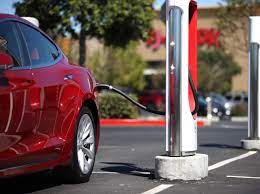One of the biggest arguments against electric cars is the length of time that they take to charge. This of course forgets that for virtually every journey in the year, the distance that the car can go without being charged is enough to do the return trip. For the majority of electric cars, you can drive 200-300 miles before having to stop to charge- short of a rare road trip this will do almost all drives. It of course also forgets the fact that a human driver needs to stop for refreshments, to use the toilet and to have a break.

I recently drove more than 1000 miles, and found that the only place where my range was a problem was when by route went wrong. In each place that I stopped to charge, it was usually ready before I was. Even a trip like this, taken to see rare wildlife, is not going to be taken more than a few times a year.
Never-the-less, the argument goes, what if you have forgotten to charge your car? Well, if you can reach 90% charge in 10 minutes you are only a few minutes behind a petrol car filling up – filling a petrol tank takes about 4.5 minutes. Now assuming you do not have to wait (something that should always be rarer with electric as there are so many more chargers) you still then have to pay. If you are required to go and pay, you are instantly up to about 10 minutes.
A standard charging protocol starts at low power, ramps up but then starts lowering the power at 60-70%. However this new standard was created using computer models and then testing on real batteries, and allows charging from 0% to 90% in 10 minutes.
What is fantastic, is that this change could probably be made by each manufacturer through just software changes. Currently time taken at a tesla supercharge by a tesla 3 is 32 minutes to go from 0% to 80%, as such this protocol could cut the time by 2/3, which is the same thing as tesla tripling the number of superchargers overnight.











